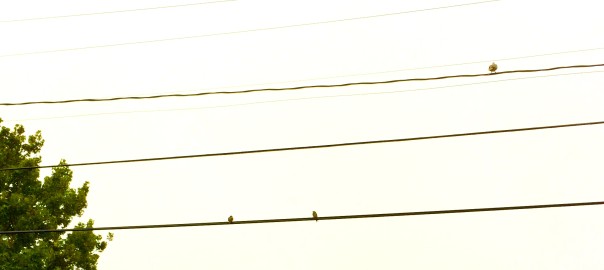Today is the final day of the 2015 Advertising Week, so the studies and new ad product announcements have been coming in fast and furious. Here is a selection of the news that we think will help book publishers reach their marketing goals in the coming year.
YOUTUBE ADS BECOME SHOPPABLE
YouTube is rolling out an ad product that makes any video shoppable—not just videos that you produce, upload and control, but those from other sources as well. This is a great opportunity to drive sales whether it’s directly to a retailer or to a page that offers several retail options.
PANDORA V. SPOTIFY
The two streaming services have proven to be very strong venues for advertising books. While they are similar in many ways, their differences are at least as important when planning your ad campaigns. When considering one service versus the other for an ad campaign, this article in Adweek is a good place to start:
“Pandora’s radio-like service is based on data—including email addresses, ages and gender— collected from 250 million registered users . . . 85 percent of listening is done on mobile, which is used as a major selling point in convincing brands to buy more smartphone and tablet-size promos. Unlike Pandora’s model, Spotify is an on-demand service that lets music fans listen to playlists or a series of songs . . . 50 percent of Spotify’s streams come from users physically pressing play.”
ARE GAMING CONSOLES THE NEW CABLE TV?
“Just as cell phones evolved into smart mobile devices capable of replacing laptops and desktop computers, gaming consoles have a chance to make cable boxes obsolete. In-console consumption habits have jumped in recent years, per Nielsen. On Xbox One, 51 percent of users watched video on-demand in 2014, up from only 26 percent of Xbox 360 users back in 2010. Likewise, 42 percent of PS4 gamers used streaming subscription services like Netflix and Hulu compared to just 23 percent of Playstation 3 users back in 2010.”
REACHING MOMS WITH VIDEO
Google makes the case that YouTube is a great way to reach moms, especially through how-to and DIY videos:
“83% of moms search for answers to their questions online. And of those, three in five turn to online video in particular.”
BEN EVANS ON ADVERTISING ECOSYSTEMS
This 16z podcast features a fascinating conversation between Chris Dixon and Ben Evans about the advertising ecosystem: they touch on payment systems, first-rate journalism bundled with 3rd-rate ad products, user identity, and native advertising (“ads that people actually like”), and how ads have increasingly become unbundled from content.
COMSCORE MOBILE REPORT HIGHLIGHTS
- All forms of usage are growing: desktop (+16%), mobile app (+90%), and mobile Web (+53%).
- Mobile now represents 62% of all digital time spent.
- App usage time skews toward smartphones for Millennials and tablets for older demos.
- Mobile audience growth is being driven by mobile Web properties which are bigger and growing faster than apps.
- Millennials mobile usage time is devoted to social, video, music, and communications.
- Mobile ads work: they cause brand lift 2-3x greater than that of desktop ads
IAB UPDATES AD GUIDELINES
Reflecting the industry shift away from Flash and toward HTML5, the Interactive Advertising Bureau has updated industry guidelines for the first time since 2013.
EXPAND YOUR LINKEDIN AUDIENCE
HubSpot has a simple step-by-step instructions on how to extend the reach of your LinkedIn posts with a sponsored post.
GOOGLE NOW ALLOWS YOU TO TARGET WITH EMAIL ADDRESSES
Google announces “Custom Match” which allows you to use email addresses you have have collected to target users through the Google ad network. Perhaps even better, Google also now allows you to use this first-party data to reach similar audiences (or “look-alikes”), who match the characteristics of readers who have signed up to learn more from you . . . but who themselves may not have heard of your book.
#retargeting #lookalikes #google
CINNABON GOES AFTER ORGANIC SNAPCHAT GROWTH
Cinnabon is using its marketing strength on Twitter and Instagram to grow its Snapchat presence (and reach the channel’s coveted Millennials) without paying for Snapchat ads;
“To help build a dialogue with teens going into the new effort, the brand hired two popular Snapchat creators—Danny Berk and Evan Garber—to take over its account and then ask fans to submit pictures of sweets last week. Within a couple of days, the brand gained 2,000 Snapchat followers.”
#social #snapchat #organicgrowth
CTR BENCHMARKS
We are often asked what average click-through rates are, and the truth is the number changes constantly depending on the year, the format, and the category. That said, Verso display ad campaigns tend to average at least a .10% CTR. An April 2015 report from Google suggests that we’re beating the industry average by a good forty percent.
#data
TARGET DISPLAY ADS TO OPT-IN CUSTOMERS
Verso partner AdRoll announces integration with Mail Chimp to allow you to use your opt-in email lists to target users with display ads.
STREAMING IS GREAT FOR CUSTOMERS, BUT NOT SO GREAT FOR THE BOTTOM LINE
Books and Music are often too easily conflated, but it’s impossible to miss the fact that the same week that saw Oyster collapse, a new study reveals that vinyl LPs bring in more money than Spotify, YouTube, and Vevo combined.
AN ARGUMENT AGAINST 3RD PARTY DATA COMPANIES
Cory Doctorow outlines some of the issues that have led to the growth of ad blocking and the three-way battle for control between Web publishers, advertisers, and users, and pointing the way to a possible solution.





